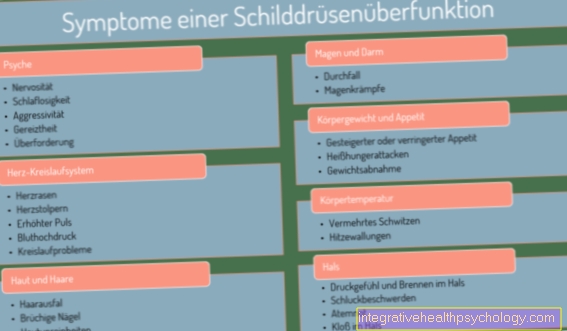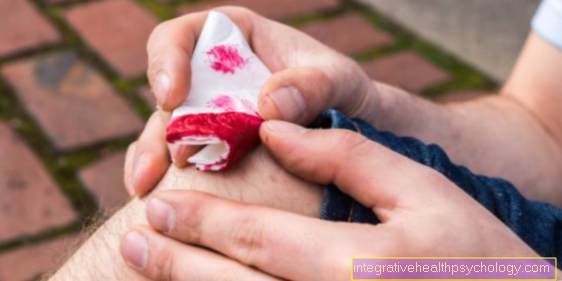immune system
Synonyms in the broadest sense
Innate immune defense, acquired immune defense, body's own defense system, antibodies, bone marrow, thymus, spleen, lymph nodes, complement system, monocytes, granulocytes, mast cells, macrophages, killer cells, lymph cells, lymphocytes, B cells, T cells, CD8 + cells, T helper cells , Dendritic cells, lymphatic system
English: immune system
Also read: Preventing the Flu
definition
The immune system is a system developed over millions of years to protect humans from pathogens such as bacteria, Mushrooms, Viruses or parasites (e.g. certain disease-causing worms). Like humans as a whole, the immune system has also developed further in the course of evolution.
One differentiates that innate from acquired Immune system. Both parts of the immune system are linked by complex mechanisms, so that a strict separation between the two parts would be difficult and simplistic.

Classification
The immune system is a complex interplay between different organs, such as the thymus, the spleen, the Lymph nodes, the appendix, the Bone marrow and the white blood cells. The immune cells of the Immune system are formed in these organs or “recruited” to fight against invading pathogens. An enormously important achievement of evolution is the emergence of one "Memory" of the immune system. In this way, pathogens that have entered the body can be eliminated more quickly when they enter the body a second time, as the cells attach themselves to theserecall". The body can protect itself against the penetration of pathogenic germs through various barriers. An important component of the immune system is (and is often neglected) the skin (the largest organ in the body, by the way). Because the skin is rather acidic (so-called pH value between 4.0-6.5), most viruses, bacteria, fungi and parasites cannot penetrate this barrier. It is roughly comparable to old city walls that protected the inhabitants from attackers. These old city walls often had a certain number of soldiers defending them.
The skin also has its own skin germs that cope well with the acidic environment and also help to destroy intruders. If pathogens enter the body through the mouth, they will eventually reach the stomach acid, which is a very efficient barrier against pathogens. The body / that immune system also tries to get rid of the pathogens mechanically with all his might. In the airways, for example, tiny cilia ensure that intruders are transported outwards. By to cough and Nießen, the pathogens are also, so to speak, catapulted out. The body initially tries to defend itself very unspecifically. Over the course of millions of years, however, a system has emerged in which there are special cells for the defense against viruses, bacteria, Parasites or even tumor cells. In the following, the innate and the acquired immune defense of the immune system described.
Functions of the immune system
The immune system is the body's defense system. Its job is to fight off pathogens, which essentially include bacteria, viruses, fungi and parasites. One can distinguish between two large areas in the immune system that work together in most cases.
The first area describes the innate, unspecific immune system. It is available to humans from birth and represents the first barrier in the fight against foreign bodies. As the name suggests, this immune defense is not specialized, so it consists of universal defense mechanisms to keep the foreign bodies in check until the specific one Immune system begins to work.
This area includes, on the one hand, physical barriers such as the skin, mucous membranes and hair, which make it difficult for foreign bodies to enter the organism. On the other hand, there are also special defense cells such as phagocytes (scavenger cells), which eat anything foreign to them, or natural killer cells with the non-specific immune system. Non-specific defense mechanisms such as the complement system are also found in the blood. This is a series of proteins that, when activated, cling to intruders, marking them and causing them to break down.
The specific, acquired immune system, on the other hand, only has to develop in the course of life. It mainly consists of B and T lymphocytes (white blood cells), the antibodies and scavenger cells they produce. T lymphocytes can develop into T killer cells and can attack foreign bodies directly. If an intruder is eaten by a phagocyte, it can pass on its signature (antigen) to a B lymphocyte. This then develops into a so-called plasma cell and begins to produce antibody proteins that represent the counterpart to the antigen.
Learn about Superantigens.
These antibodies can now recognize penetration lines that carry the same antigen, attach themselves to them and thus on the one hand paralyze them and on the other hand mark them as prey for phagocytes. As this process takes a few days, the effect of the specific immune system is delayed. For this, some B-cells develop into so-called memory cells, which last a lifetime and continue to produce specific antibodies. If the body is confronted with the same intruder again at another point in time, the specific immune system can react much faster because it still has the appropriate antibodies "in memory".
The innate immune system

The Innate Immune Defense / immune system is present in every infant (not suffering from an immune disease) and ensures a non-specific immune defense, i.e. it attacks everything foreign. An important component of the innate immune system is the so-called. Complement system. This immune system consists of around 20 different serum proteins (part of the Blood), which mainly encompass bacteria (so-called opsonization) and phagocytes (Macrophages) can activate, then eliminate the bacteria. In addition, other body cells (namely so-called. Monocytes, Mast cells, Granulocytes as well as natural Killer cells) which lead to the elimination of the intruders. The above-mentioned barriers of the immune system, such as the skin or mucous membrane with the special cells, the epithelia, are part of the innate defense system. The cells of the innate immune defense / immune system are like a first shock troop in the fight against invading pathogens.
Via a so-called. Major Histocompatibility Complex (MHC), which is present on every body's own cell, the defense cell can differentiate between friend and foe. Most infections are recognized and cleared by cells of the innate immune system. The cells of the innate immune defense belong to Macrophages (Phagocytes), natural killer cells, mast cells, monocytes and epithelial cells.
The cells mentioned are not only important for the innate defense, they can also transfer parts of eaten pathogens to the outside on their cell envelope (Cell membrane) present to other cells so that they produce antibodies against the pathogen. This makes the defense against the pathogen even more special or specific.
The acquired immune system
The acquired immune system consists of two components: the so-called. humoral immune response / Immune system, which leads to the formation of antibodies (see below), and which cellular immune response/ Immune system, which leads to the destruction of the affected pathogen via so-called cytotoxic cells. The Lymph cells (Lymphocytes) are extremely important for the acquired immune system. Lymphocytes are stored in so-called B and T cells divided.
The B cells are activated by complex mechanisms. They then transform into so-called plasma cells, which are able to produce antibodies against the pathogen. The antibodies are specifically made against the particular intruder. They adhere to it and can bind it so that e.g. Macrophages (Phagocytes) can dock to the other (still free) side of the antibodies (so-called Fc part) and then “eat” the “trapped” pathogen. The immune system's T cells, in turn, are divided into different cell types with different tasks. On the one hand there are the so-called cytotoxic (i.e. cell-toxic) T cells or CD8 + cells, which are capable of destroying tumor cells or cells infected with viruses. On the other hand, there are T-helper cells, which are divided into T-helper cells 1 and T-helper cells 2. T-helper cells 1 activate the phagocytes (macrophages) and the so-called dendritic cells (see below). The T helper cells 2 from the immune system in turn activate the formation of antibodies via the plasma cells (antibody-producing B cells).
The antigen-presenting cells play an extremely important role in the immune system. These are cells that “eat up” pathogens and present their typical proteins to the outside world, thus making it clear to certain other cells of the immune system (e.g. B cells), whereupon these cells are activated. These antigen-presenting cells from the immune system include B cells, scavenger cells (macrophages) and so-called dendritic cells. These cells can activate T helper cells 1 and 2 through their presentation ability after they have eaten the pathogen. B cells are then activated by T helper cells 2 to form antibody-forming plasma cells. T helper cells 1 activate the phagocytes.As mentioned above, the antigen-presenting cells already present the main histocompatibility complex (MHC) like all endogenous cells. In addition, in this complex, the recognition protein (antigen) of the pathogen. Lately, dendritic cells have played a major role in research, as more and more data show that these cells can have a regulatory effect on both the innate and the acquired immune system.
The major histocompatibility complexes (MHC) are very important. The MHC I occur on every nucleus-containing cell in the body except on nerve cells. The MHC I recognize the above-mentioned cytotoxic (i.e. cell-toxic) T cells or CD8 + cells (important for virus and tumor cell defense). The MHC II are located on the antigen presenting cells described above. They recognize the T-helper cells 2, which activate B-cells to form antibody-producing plasma cells. So that the T cells do not destroy the body's own cells, they undergo training in the thymus organ, just like at school. A so-called negative selection takes place there: if the T cells destroy the body's own cells, they are sorted out.
At this point you can also read about the tasks of the B lymphocytes: What are B lymphocytes?
Importance of the immune system
At Leukemias (white blood cancer), under one chemotherapy or in the case of congenital immune system defects, serious consequences can sometimes arise for the affected patient. Affected patients often suffer from recurring and sometimes serious infections, which can also be fatal. Especially with acquired immunodeficiency (AIDS, engl .: A.quired I.mmuno deficiency S.yndrome), this becomes clear: In the end stage of the disease, the T-helper cells in particular are missing 2. The result is infections with pathogens that normally affect healthy immune system have no chance, e.g. the bacterium Pneumocystis carinii or the parasite Toxoplasma gondii. In leukemia, there is no adequate formation of immune cells / immune system. This results in serious problems for the patient as well. Chemotherapy not only destroys malignant cancer cells, but also, as an undesirable effect, destroys healthy, rapidly dividing cells, including the immune cells of the immune system.
On the other hand, there are a number of so-called Autoimmune diseaseswhere the immune system mistakenly turns against its own body. Antibodies can be formed against almost all tissues in the body, e.g. against blood vessels in the Churg-Strauss disease, against Kidneys at the so-called Glomerulonephritis, against the thyroid in the Hashimoto's thyroiditis, against the Spine at the ankylosing spondylitis, against colon tissue in the Ulcerative colitis, against cells of the pancreas during Type 1 diabetes mellitus, against nervous tissue Multiple sclerosis etc.
Also at Allergies the immune system plays a central role. In allergic reactions, the immune system reacts excessively to a certain substance (the so-called allergen), i.e. too fierce. This reaction of the immune system can be life-threatening under certain circumstances, if it e.g. leads to narrowing of the airways. Allergic diseases such as asthma, Neurodermatitis (Atopic eczema) or hay fever are caused by such excessive reactions of the immune system.
The immune system thus has a vital function for the human organism. Defects in the immune system can lead to death. On the other hand, the immune system itself can also be the cause of a disease.
How can the immune system be strengthened?
In order to strengthen your own immune system, the following things can be observed:
A healthy, balanced diet that provides the body with all the necessary nutrients is essential for a functioning immune system. The various vitamins are particularly important here, most of which can be specifically consumed in the form of fruit or vegetables. It is also important to drink enough, as many pollutants are excreted in the urine. A sauna session or alternating hot and cold showers train the blood vessels and ensure that the body does not cool down as quickly.
This article might also interest you: Which drugs strengthen the immune system?
Regular exercise also has an activating effect on the body and thus a positive effect on the immune system. At the same time, it is important to relax regularly: the hormone cortisol, which is released in both physical and, above all, psychological stress, inhibits the effect of the immune system. Sufficient sleep gives the body the opportunity to regenerate and (re) build the immune system, which makes it less susceptible to infections.
Under the action of sunlight, the body produces more vitamin D, which also supports the immune system. In addition, it is of course advisable to be vaccinated against some diseases, although the annual flu vaccination is controversial and only recommended if you expect a lot of dealing with sick people. In general, a healthy optimism and a positive attitude help not only subjectively, but also medically proven in the defense against diseases.
Read more on the topic: How can you strengthen the immune system? and How can I strengthen my child's immune system?
Immune system of the gut
Compared to the skin, the intestine has a gigantic surface and therefore also a lot of target for potentially harmful foreign organisms. Therefore, he has some mechanisms to defend himself. Distributed throughout the intestine are so-called Mucosa-associated lymphoid tissue, that is, collections of cells of the immune system, the task of which is to remove pathogens that have penetrated the comparatively very thin intestinal wall.
The intestine is also from Billions of different bacteria and other microorganisms colonizedwhich in most cases harmless and not only help with digestion, but also play an important role in the immune system. For example, they displace foreign, possibly dangerous bacteria, viruses and fungi and prevent them from settling. They also help to keep the mucous membrane intact and provide the immune system with important information about invading pathogens so that they can then be fought more specifically. If this intestinal flora is destroyed, for example by Antibiotics, it can lead to an attack by pathogenic bacteria and thus z. B. to diarrheal diseases. In this case the flora can be "reforested" with so-called probiotics.


.jpg)

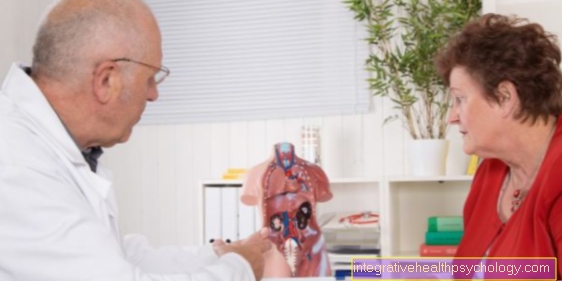
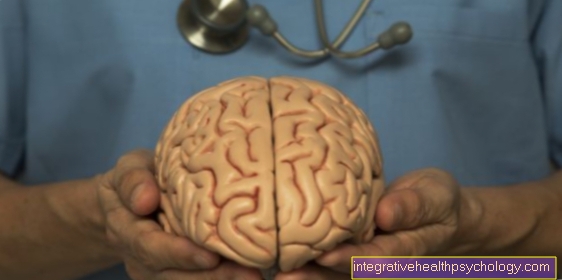
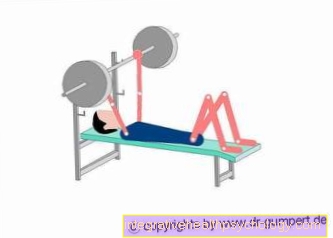
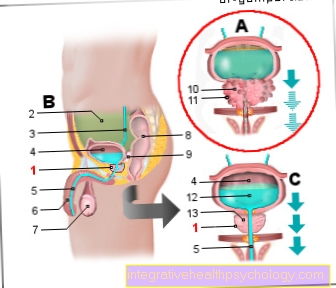
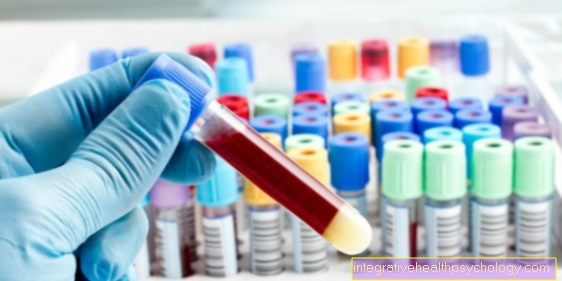



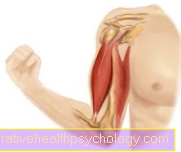

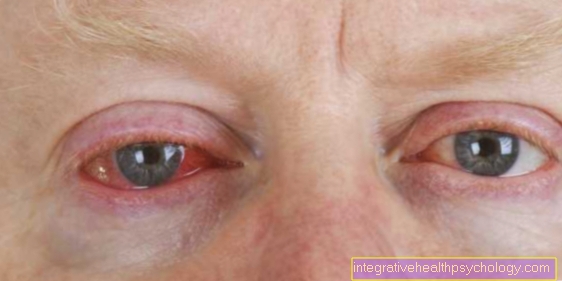

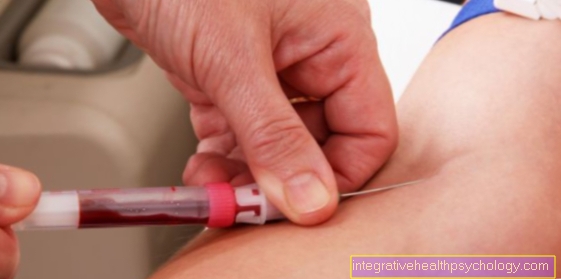

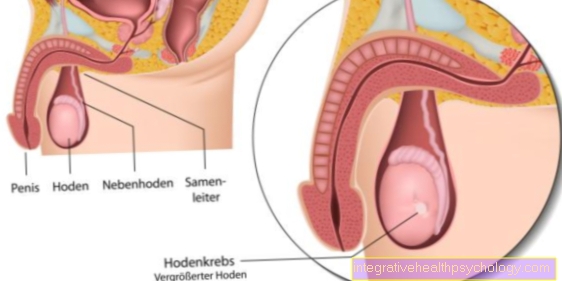

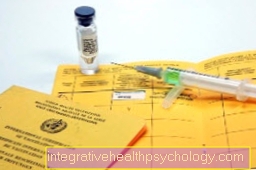
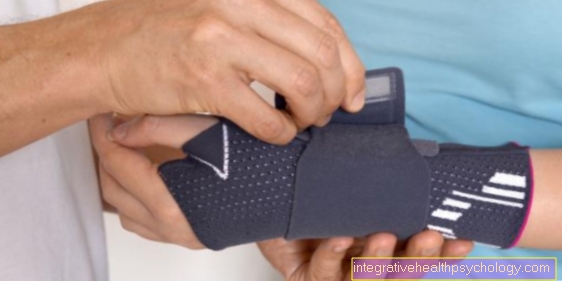
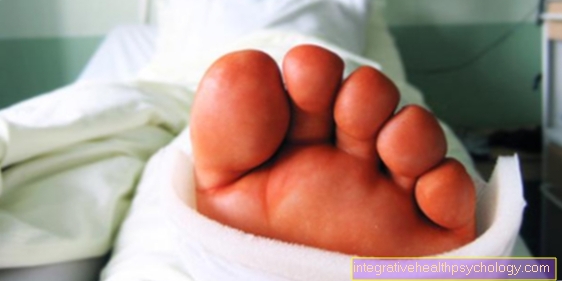

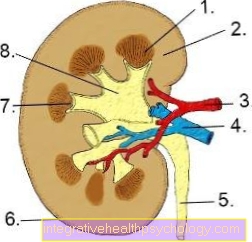
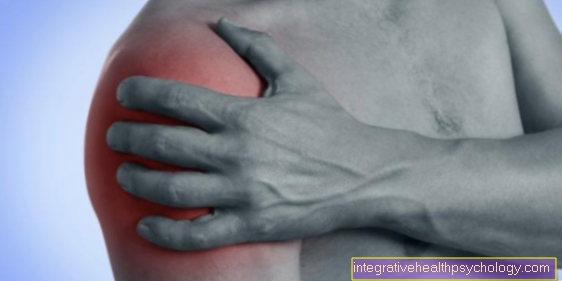
.jpg)

